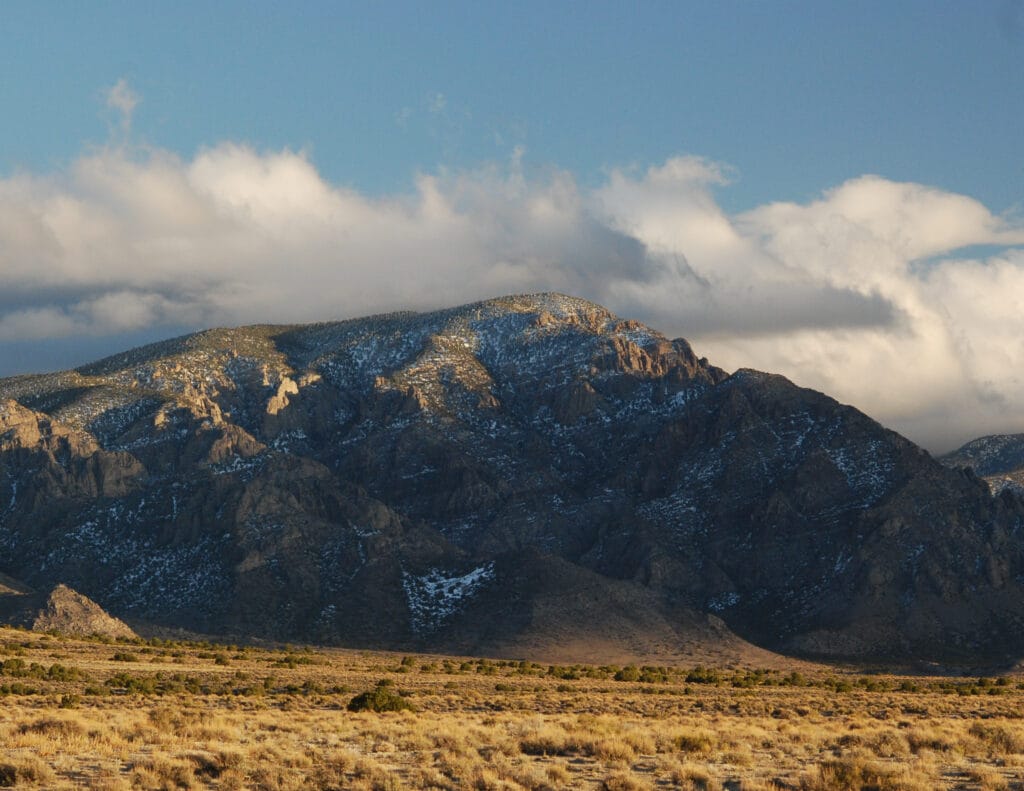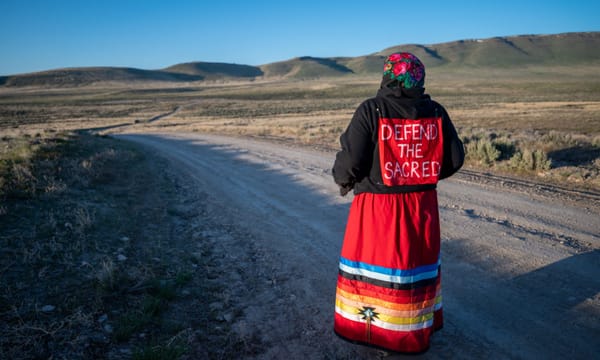Utah groundwater project draws ire from Nevada officials and tribal leaders

by Jeniffer Solis, Nevada Current
January 13, 2022
ELY–Utah had one of the driest and warmest years on record in 2021. Now one Utah county plans to pipe water from aquifers underlying the Utah-Nevada border to compensate for drying local aquifers, a move that concerns some tribes and water officials in Nevada counties.
The proposed Pine Valley Water Supply Project would pipe water to Cedar City in Iron County, Utah from aquifers east of Nevada’s border. The 70-mile pipeline project is now under federal environmental review. The public comment period for the project started Friday.
Gary Perea, a member of the White Pine County Water Advisory Committee, said the project will impact the entire Great Basin region, including his county in Nevada.
“This project will have a dangerous ripple effect in Nevada. Our analysis shows that groundwater flow between Pine Valley and basins in Nevada will be irreparably harmed, resulting in groundwater mining,” said Perea, a former White Pine county commissioner and a small business owner in Snake Valley. “The project will facilitate groundwater mining and, therefore, must be stopped.”
Iron County residents rely on aquifers for water, rather than a river system or reservoir, but those aquifers are drying due to increased drought in the region and booming population growth. Iron County officials estimate water users pump about 28,000 acre-feet a year, considerably more than the 21,000 acre-feet per year that is actually available from the aquifer.
Water officials for Iron County note they have settled water rights for the estimated 15,000 acre-feet of water the project would pump annually from aquifers in neighboring Beaver County. But opponents of the project, including Beaver County, argue that those water rights reflect a larger misallocation of water resources in the West.
“This project will be a disaster for ratepayers and taxpayers in Iron County and will drain important valleys for Beaver County’s economy, wildlife and future,” said Beaver County Commissioner Mark Whitney. The water Iron County wants “doesn’t exist now and it won’t exist in the future,” he continued.
Conservation groups say there is enough water in the area to serve ratepayers in Iron County, arguing that the county should propose meaningful incentives to conserve water like banning turf and penalizing water waste.
Water officials for the Central Iron County Water Conservancy District, who would develop the project, said the county has installed several large artificial recharge systems to put excess water back into the ground, and are working to implement a new reuse program to supply agricultural fields.
“However, due to the state’s Groundwater Management Plan, these conservation programs will not be enough to fix our water resource issues for the people that are currently living here,” said Jessica Staheli, public relations & conservation manager for the Central Iron County Water Conservancy District (CICWCD).
A new Utah new groundwater management plan aims to limit the amount of water that can be withdrawn from aquifers to avoid dangerous depletion.
The new limits on groundwater could cause municipalities that heavily rely on groundwater, like those in Cedar Valley, to lose about 75% of their water rights over the next 50 years.
“If the municipalities’ water rights are cut by 75% you cannot conserve your way out of those reductions. We must diversify our water resources and extend our reach for water,” Staheli said.
Tribal leaders fear expressed the project would affect their tribal water rights and sacred sites. The Confederated Tribes of the Goshute Reservation in Nevada believe the water pipeline project “could deprive tribal communities of environmental assets needed for their health, safety, and well-being.”
One sacred site of concern for Nevada tribes is an area in White Pine County’s Spring Valley known locally as the Swamp Cedars, which tribes say hold significant spiritual and historical value for indigenous communities.
“This project will siphon away water from Spring Valley, home to the Swamp Cedars, and Snake Valley, which holds much significance to my people,” said Delaine Spilsbury, Great Basin Water Network Board Member and a senior tribal representative with the Ely Shoshone Tribe in Nevada. “If Cedar City wants to steal this water, there will be damning environmental, spiritual and cultural consequences that will harm native people.”
The draft environmental impact statement prepared by the Bureau of Land Management concludes the project does not extend to groundwater basins where tribal reservations are located. However, tribes argue that culturally significant areas lay beyond tribal reservations and include their greater ancestral lands.
“The pipeline will primarily run near roadways, and as such it is not foreseen that the project will harm any culturally sensitive areas. Extensive hydrological models have also been prepared to show all possible impacts to the environment,” Staheli said.
Environmental groups argue the hydrological models used by BLM and Iron County are inadequate, citing “substantial, wide-ranging data gaps” in understanding aquifers and groundwater flow.
“We feel like the release of CICWCD’s environmental review is akin to a cut-rate used car salesman trying to sell a junker. We’re not buying it,” said Kyle Roerink, executive director of the Great Basin Water Network.
An independent study commissioned for the Great Basin Water Network using existing data from a federal U.S. Geological Survey groundwater model found the project could jeopardize underground flow systems in Snake Valley and imperil tribal sacred sites and more than a dozen interconnected groundwater basins in Nevada.
The study highlights the water pipeline’s proximity to Snake Valley, noting it would likely result in lasting water resource impacts in the area by drawing down Snake Valley’s groundwater system by 50 feet within the first 62 years. Ultimately, the study predicts a reduced groundwater budget in Snake Valley.
Roerink points to U.S. Geological Service studies finding that Iron County’s plan to pump 15,000 acre-feet per year from aquifers in neighboring Beaver County exceeds the aquifers recharge rate by more than 35%, at the expense of interconnected aquifers near the Nevada-Utah border.
“They are completely ignoring the science that the USGS has done on regenerative groundwater flows,” Roerink said. “Whether you live on the Nevada side of the border in White Pine County or whether you live near the Great Salt Lake you have something to be concerned about.”
Nevada Current is part of States Newsroom, a network of news bureaus supported by grants and a coalition of donors as a 501c(3) public charity. Nevada Current maintains editorial independence. Contact Editor Hugh Jackson for questions: info@nevadacurrent.com. Follow Nevada Current on Facebook and Twitter.





